Hello fellow dog lovers! Today, let’s dive into the world of training our less motivated canine companions! We are Bella and Nemo, and we know that every dog is unique, and sometimes, our furry friends need a little extra encouragement. Nemo is a 5-year-old Russian toy, a tiny little 2.1 kg terrier with a big mind of his own! I’m Bella, a 26-year-old medical student with a big will and desire to excel at dog training. So, if you’re a proud “parent” of a dog who is not so easy to train, like I am to Nemo, read on for some valuable insights on how to make training a fun and rewarding experience for both you and your best friend.
CONTENTS:
- Understanding Your Pup’s Personality
- Patience is Key
- Choose the Right Environment
- Celebrate Small Wins
- Pomppa Gear in Training
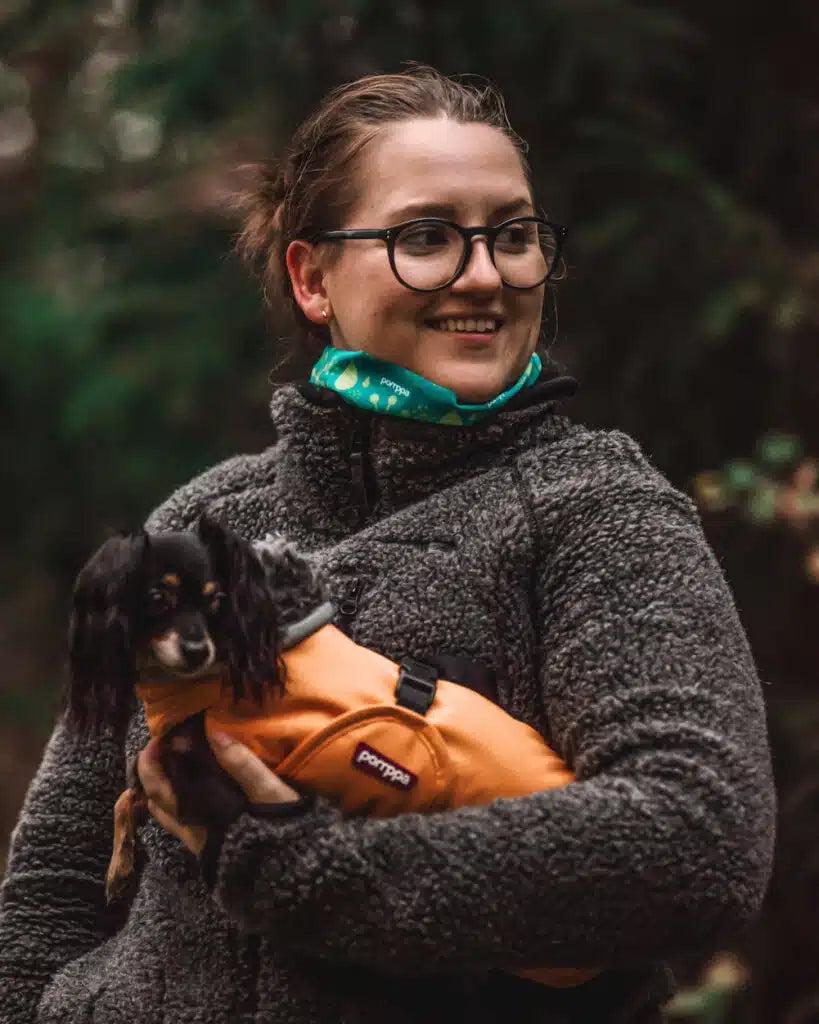
1. Understanding Your Pup’s Personality
Before diving into training with your dog, take some time to understand your dog’s personality. Every dog, regardless of size, has its own quirks and preferences. Observe and figure out what motivates and excites your dog.
For example, Nemo doesn’t really care for food that much, he isn’t motivated by just any treat or food. Most of the time the food doesn’t mean a reward for him, it’s more like he eats because he has to for survival not because he is obsessed with food and will eat anything, like is quite common with the majority of dogs. It’s the same with toys, he never really played tug of war or took toys to play with by himself. He was always since puppyhood a quite chill and independent puppy. He didn’t really care much for interaction with me if it wasn’t cuddling up on the sofa. It was never in his nature to follow me around; he always went and explored what he wanted. It’s like Nemo’s world, I’m just living it haha! But I did notice he was always more into socks or inanimate objects like plastic containers and things like that instead of all the expensive toys I bought for him.
I really had to work hard to figure out what his favorite treat is and what would motivate him to want to be with me and train with me, for food or toys. But motivation can be other things not just food, toys or other random objects can also be used as motivation and rewarding! Knowing these preferences will be key in tailoring your training approach.
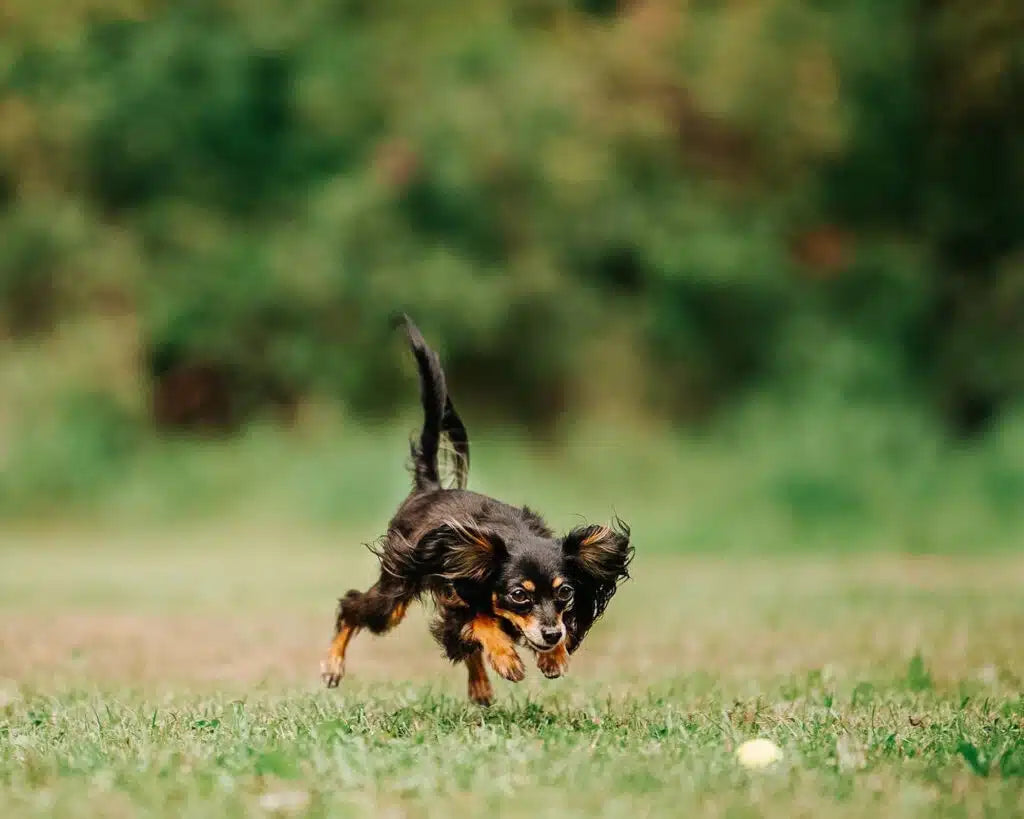
With Nemo I started using socks to try and teach him to play. I had to go really slowly and carefully because he was a very tiny puppy with only 1.1 kg at 4 months old when I got him. I used socks and I used other sorts of games to try to get him interested in following me and playing with me.
Later on, I found out that Nemo really likes verbal praise, he also really likes squeaky balls and things that he can chase. So, throwing treats away from him to catch them worked much better than if I just gave him the treat out of my hand.
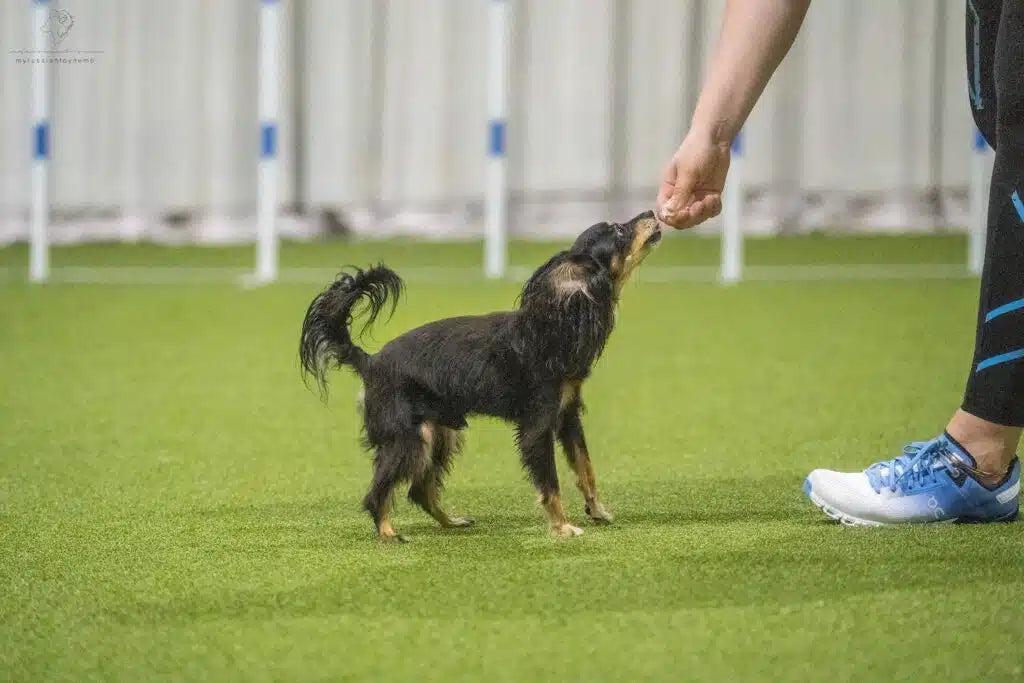
I also realized if I train in the early afternoon or late night, he is more motivated than other times of the day. Figuring this out can be challenging, it takes a lot of time to “learn” your dog and their quirks, but I promise in the end you will find something that just makes sense for you and your dog. Think outside the box!
2. Patience is Key
Training an unmotivated dog requires patience. For us that was also one thing that ended up breaking our relationship in 2021. I simply wanted too much from Nemo, that he could not give me at that time. My obsession and will to succeed with agility and dog sport got the best of me and I lost my patience, and I lost sight of what dog I have in front of me. It can be extremely irritating having a dog who isn’t just always “on”, it can be hard to see others thriving on social media with dogs who just are innately motivated. But try to not compare yourself and your dog to any others. Everyone does have their own journey and path to move forwards. And sometimes we move forwards also by taking a step back.
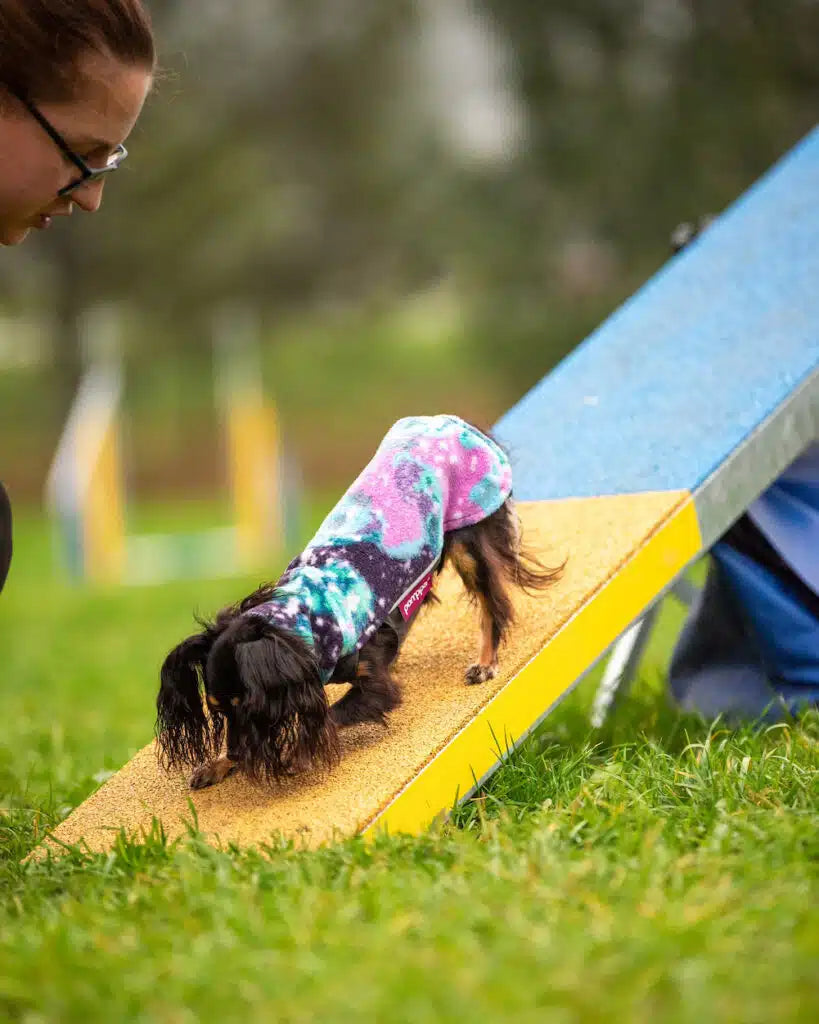
I really learned this after our 2021 break down. I stopped training agility or actually anything with Nemo for a few months. I just worked on our relationship and our companionship together. I tried to do a lot of things instead where I had no criteria on him, just let him be a dog however he wanted almost. Slowly I went back to basics and constantly gave him praise to build his confidence up again. And after this huge step back we came back stronger!
So, my tip is, if it’s not working, do something else, try another sport, take a complete step back from any sport and just let your dog be a dog and let yourself also rest and collect energy to move forwards.
Keep in mind that these types of dogs might take a bit more time to grasp new commands or concepts. Break down training sessions into short, engaging segments, ensuring that your dog doesn’t lose interest. Positive reinforcement, such as treats, praise, or playtime, can work wonders in keeping your dog motivated, you just have to find the right tools to use. I mean it took Nemo almost 2 years to grasp the concept of “sit pretty” but eventually we got there. We did small, short sessions often, sometimes multiple times per day, then we stopped training the trick completely for a few months and came back to it and tried again and eventually he got it. Patience is really your best friend!
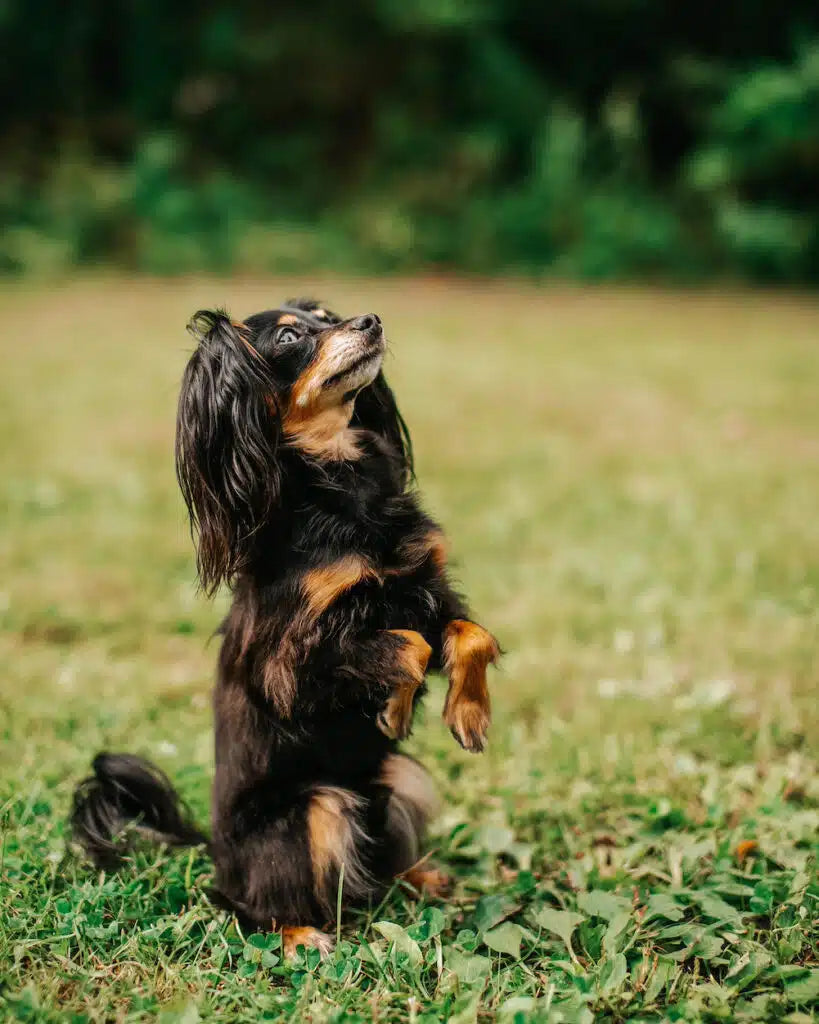
3. Choose the Right Environment
Create a conducive training environment for you and your dog. Dogs like Nemo who aren’t super motivated or focused can easily get distracted, so choose a quiet and familiar space for training sessions. Minimize external stimuli to help your pup focus on the task at hand.
For us this meant training a lot in our home, and then just outside of our home in the hallway, then in the garage area to eventually move things outside. I mean Nemo learned ALL his agility skills in my living room. We used whatever equipment I could make to train jumps, tunnel commands, and even contact obstacles. It is possible to do a lot when you have a comfortable space for your dog, where they can have the best chance to succeed in your training with them.
The outdoors has always been Nemo’s biggest weakness, because greeting other dogs and smells of the outside is simply much more rewarding for him than anything I can give him or lure him with. Because of this lack of will to please, even the smallest of things, like him looking up at me while walking on a leash has been a HUGE win for us. Where I really try to emphasize rewarding to the maximum, offering treats, offering verbal praise and offering play. 3 in 1 rewards is something that also helps us in busy environments because it is like a jackpot reward for the smallest of things. But trust me, it might take months and months to even get there with hard to train dogs.
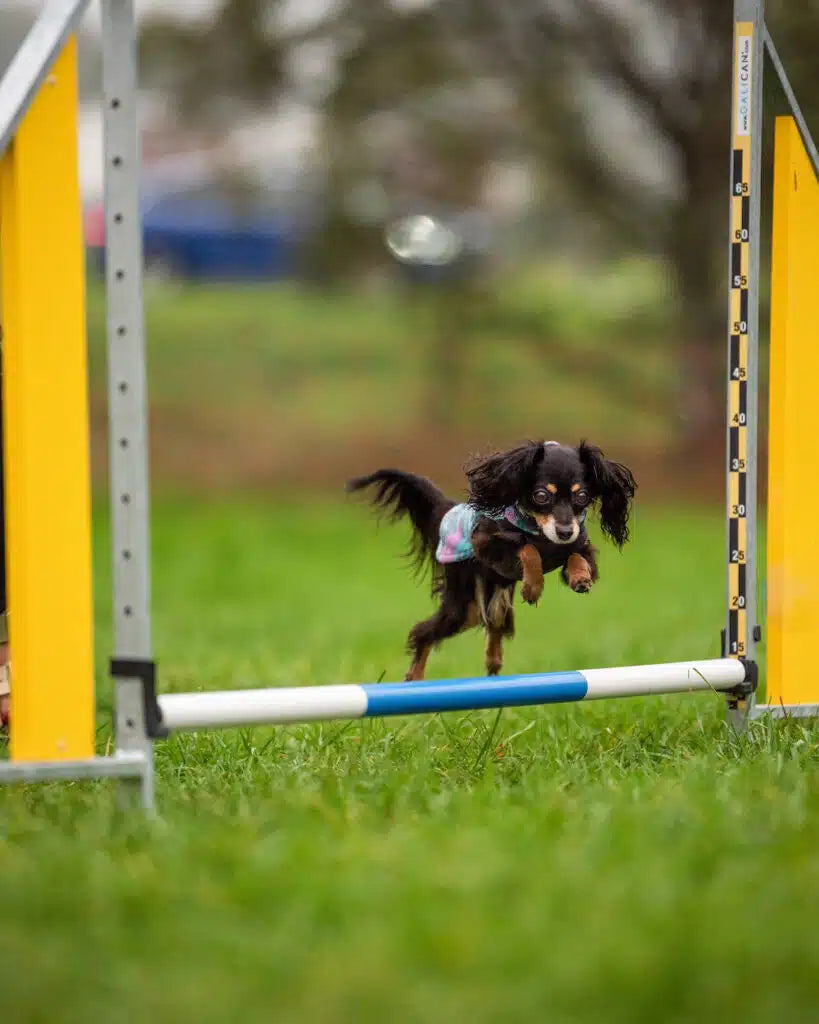
4. Celebrate Small Wins
Small victories deserve big celebrations. Don’t get discouraged, don’t give up.
I see it a lot of times that it’s the people, the trainers who actually give up way too fast. Because it can truly be enraging to train hard to train dogs. But just keep trying, keep thinking outside the box, keep going and don’t give up. Somehow, some way, you will get to your goal. Even if that goal has to be set lower than what you initially envisioned.
One such example is being off leash for us. Nemo truly is good at being off leash if we are alone. If there is any distraction he doesn’t care for me really at all haha, the world is too exciting to follow “humom” ! So, my goal of having my dog be off leash everywhere following me like a shadow didn’t get realized, instead I keep him off leash only in areas where he can be safe where we are alone, and he instead became a really good leash walker. He responds on a leash in the perfect way instead and he gets the freedom he wants by using a long line or flexi leash. So, I lowered and changed my goals, and it is totally okay! I still celebrate that he now knows how to walk perfectly on a leash and that I was able to teach him that, which is a big win!

5. Pomppa Gear in Training
Finally, consider the role of Pomppa gear in your training routine. The comfortable and stylish design of Pomppa products ensures that your dog is at ease during training sessions. We often use the Jumppa Pomppa when training in colder indoor halls and even outside in milder weather. The other raincoats are also the perfect coats to use when training in muddy places or in rainy weather. In order to make your dog more comfortable in those weather conditions a good coat can really help. Staying dry and warm will for sure increase motivation for your dog because who wants to train being wet and cold?
The Jumppa also doesn’t restrain your dog in any way while moving. We run agility with it, without any problems.
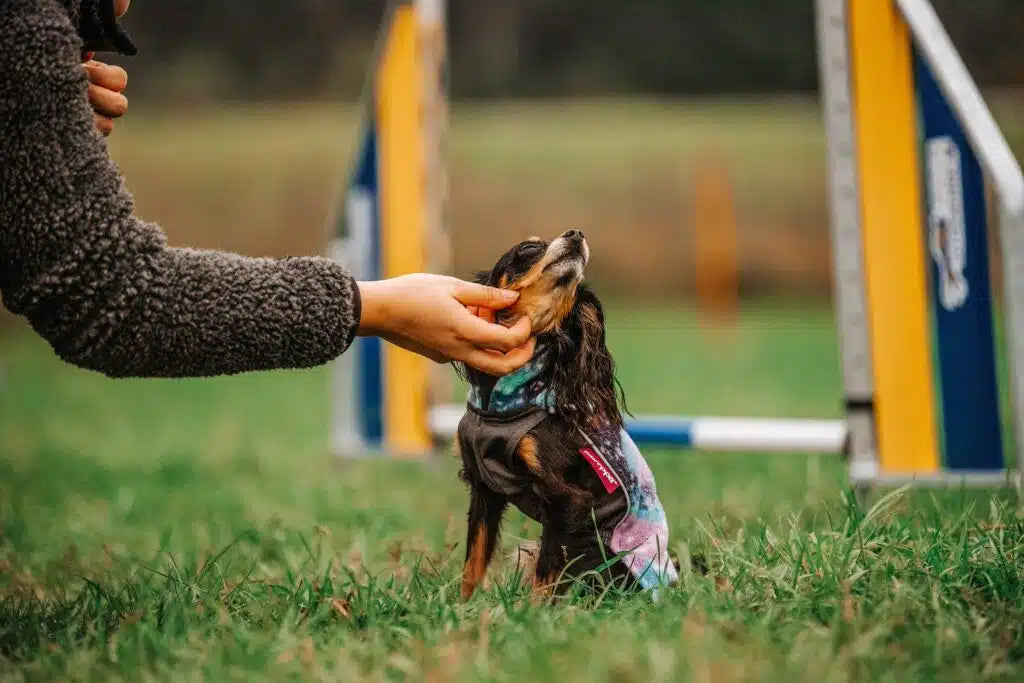
In conclusion, training an unmotivated dog like Nemo, requires a tailored approach filled with patience, positivity, and a touch of playfulness. Embrace the uniqueness of your pup, and together, you’ll embark on a rewarding journey of learning and bonding I’m sure of it!
If you need any motivation or inspiration, along with more tips and tricks check out our profile where we have a lot of training videos of Nemo and my approach on how I trained him.
Happy training! 🐾✨
/ Bella and Nemo









